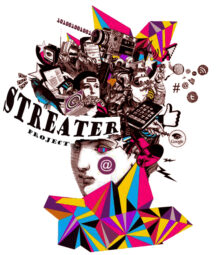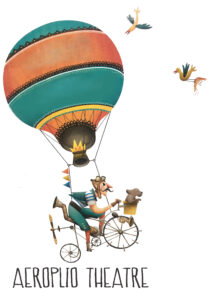
Video Streaming Trends for Performing Arts Organizations
Performing arts organizations face unexpected pivots to sharing their content digitally due to the Covid-19 pandemic. Many of these organizations are confronting entirely unfamiliar methods of distribution, launching head-first into the vast world of streaming. To embrace the opportunities of such a shift, organizations must consider the benefits and risks of the various methods within the ever-evolving digital landscape.
On-Demand Streaming: The New Normal
Over the last decade, video media consumption habits have shifted from the use of DVDs to downloading, to streaming. Streamed media can be presented via Livestream, in which content is delivered in real-time, or it can be accessed “on demand.” In addition to the increased availability of streamed content, technological improvements in broadband and mobile connectivity are ushering in better online and mobile video capabilities for users, heightening the appeal of streamed content (Clement 2019). Generally, video-on-demand services can be accessed either by paying a premium for a subscription to a streaming service or for free with advertisement-supported content.
In the early days of media streaming, there was disagreement among entertainment professionals and scholars surrounding how this new mode would change the industry: would media aggregators thrive on selling niche content or stick to blockbuster hits? With lower production costs, the risk associated with offering unpopular content was not as harmful as it used to be, and, at the very least, this content could find a small audience online (Anderson 2004). In contrast, others speculated that the shift to offering on-demand entertainment has altered the value of the content, often resulting in consumers who feel less inclined to own copies of media, eliminating one of the traditional primary sources of income for creators (Tyron 2013, 3).
Elements of both sides of the argument have played out as predicted, but most can agree that streaming is rooted in the idea of access: the ability of media to circulate faster to a broader audience for cheaper (Tyron 2013, 3). It can be used for educational, informative, and entertainment purposes and is also often accompanied by the use of social media, the implementation of which can encourage social interaction among audiences through live chat, comments, and content sharing. Through streaming, consumers can discover and access a massive volume of content at a moment’s notice from the comfort of their own homes, and they can often engage with other consumers as they do so. With the widespread acceptance of this method of experiencing video entertainment as the new normal, the industry finds itself in the thick of the “streaming wars.” Meanwhile, as major players in film and television streaming compete for paying audiences, live performing arts producers have cautiously dabbled in the digital distribution of content.
Embracing Streaming in the Performing Arts
Performing arts organizations have been slow to adopt digital distribution into their operating and production models to share their content, prioritizing live productions over digital, but 2008 seemed to be the first moment of opportunity for a handful of large performing arts organizations. The Berlin Philharmonic established its Digital Concert Hall, which offers both single-ticket and subscription payment methods to stream content, both live and archived, via the Digital Concert Hall website. In June 2009, the Royal National Theatre launched National Theatre Live, broadcasting theatre performances live in cinemas globally via satellite. Around the same time, The Met in HD also began offering a live viewing experience in cinemas, with digital streaming access added as unions allowed. The Detroit Symphony Orchestra—the first orchestra in the U.S. to offer a free live streaming webcast series in 2011—also offers concerts on demand via their own website. The Philharmonia Orchestra has been a leader in the field with their focus on storytelling and presenting high-quality video content on demand, including concerts, behind-the-scenes interviews, and listening guides. Their YouTube channel receives 4 million views per year and has over 108,000 subscribers. While these organizations enhanced their current audiences’ access to their content, these single-entity streams may not be effective at expanding their audience bases.
The Covid-19 pandemic altered media consumption habits in the U.S. across the board, but it certainly impacted the live entertainment and performing arts industry, a field generally reliant on in-person participation. Because of the pandemic, the live music industry in the U.S. could lose up to $8.9 billion in 2020. Live entertainment venues have been forced to confront their limited abilities to implement sanitation and social distancing, and most patrons will not accept the risk of going to an event unless the venue can prove they have done everything in their power to ensure visitors’ safety. Most venues cannot afford to operate at 20% or less capacity, provide the proper personal protective equipment, and withhold merchandise sales (simultaneously a high-risk activity regarding the spread of the virus and a significant source of revenue for venues). This paints a bleak picture for arts producers and presenters. As venues closed and concerts were canceled beginning in March 2020, streaming became the only viable option for many arts organizations to distribute their content. While some organizations have a backlog of high-quality video content to share online in this time, many do not.
Considering the success of streaming in media and entertainment, a move to start utilizing streaming to reach performing arts audiences was inevitable, even without the pandemic. However, arts organizations continue to grapple with how to most effectively incorporate streaming. Uncovering the best applications of streaming—especially within the continuously-shifting landscapes of the arts, culture, and entertainment over the past year—will require experimentation and, likely, uncharted exploration. Forthcoming research will examine the viability of sharing content on streaming services such as Marquee TV as opposed to other channels, such as single-stream outlets, for performing arts organizations.




